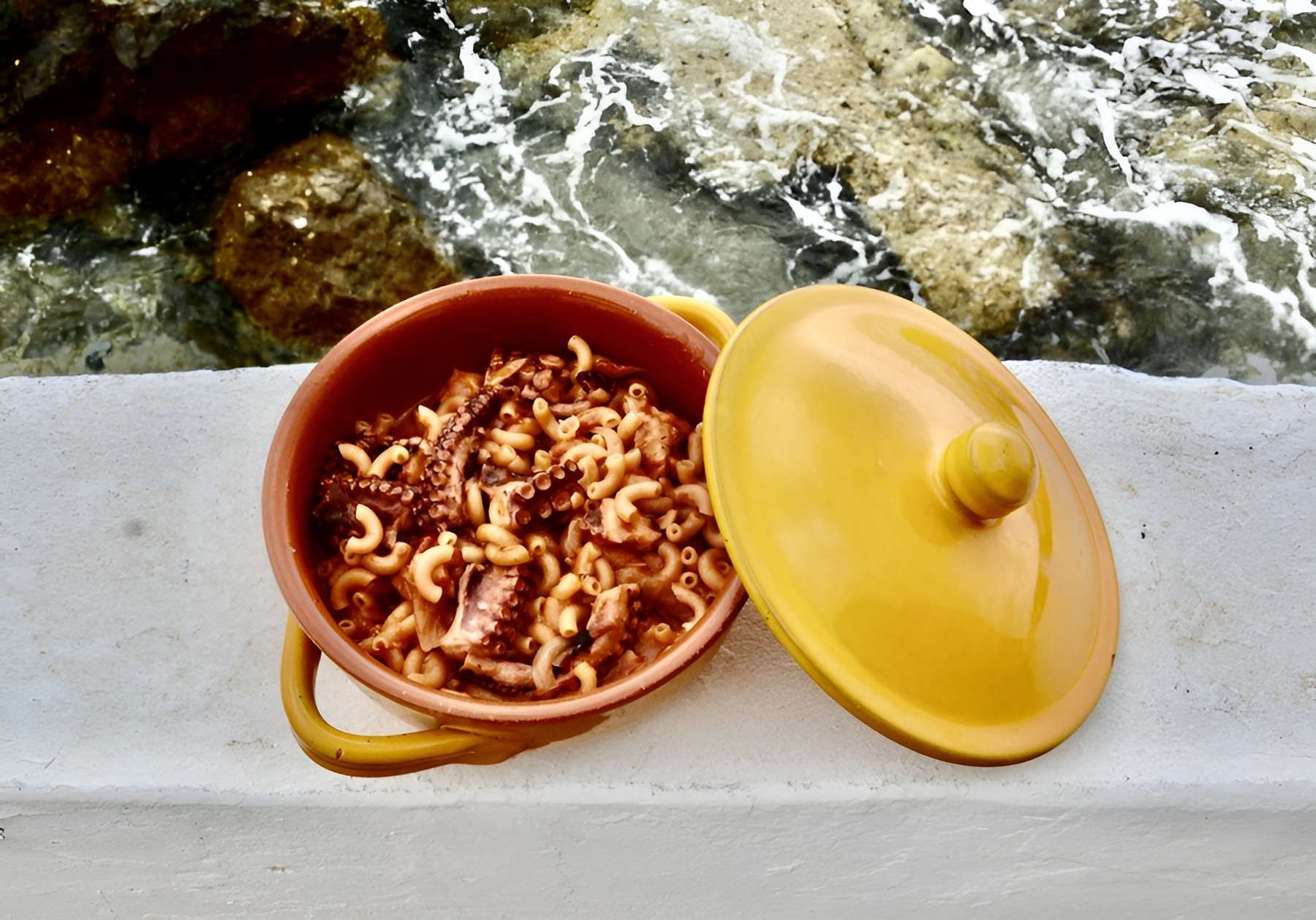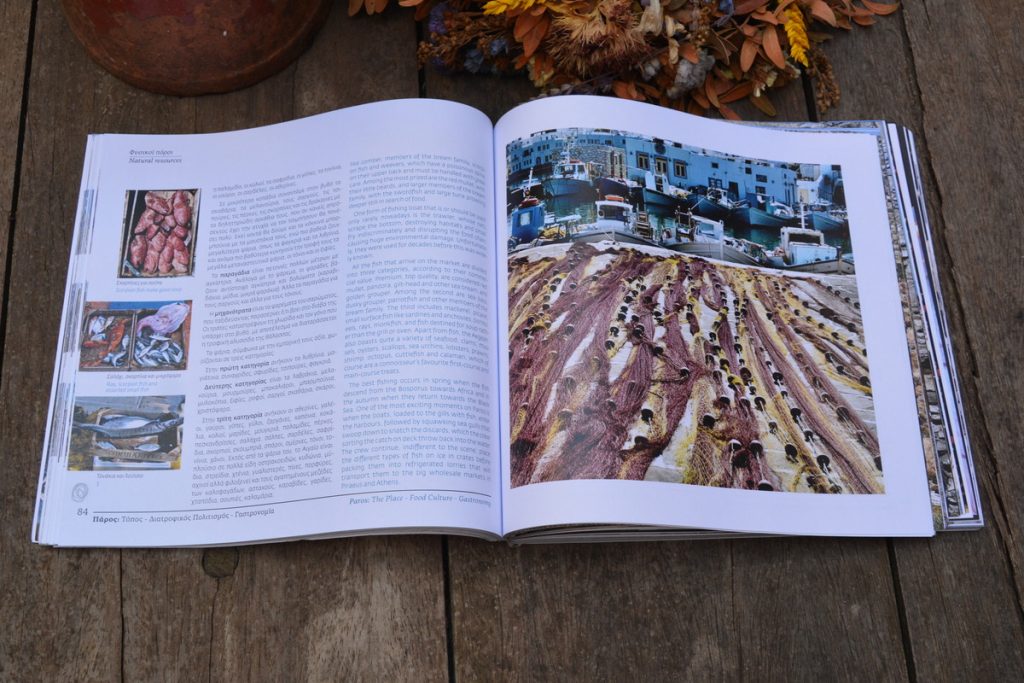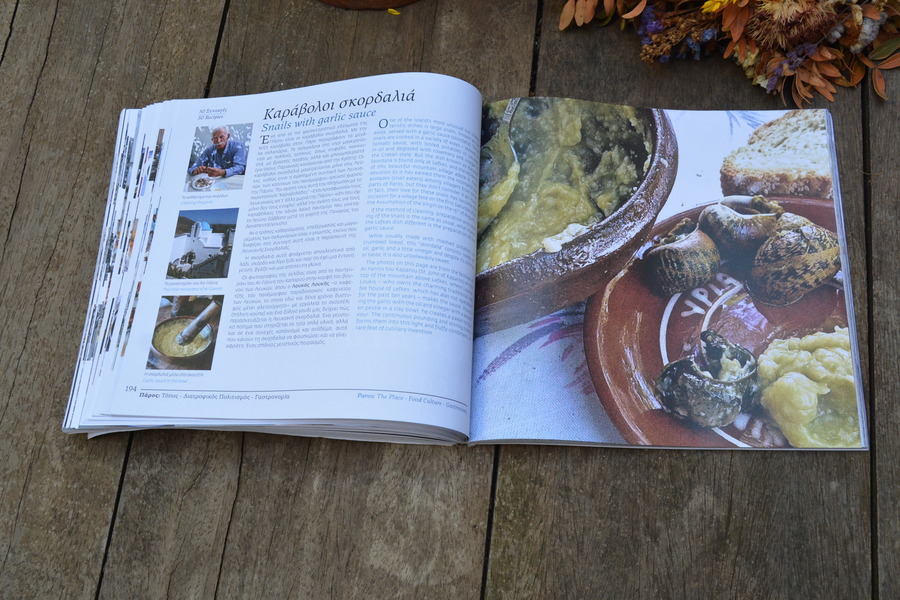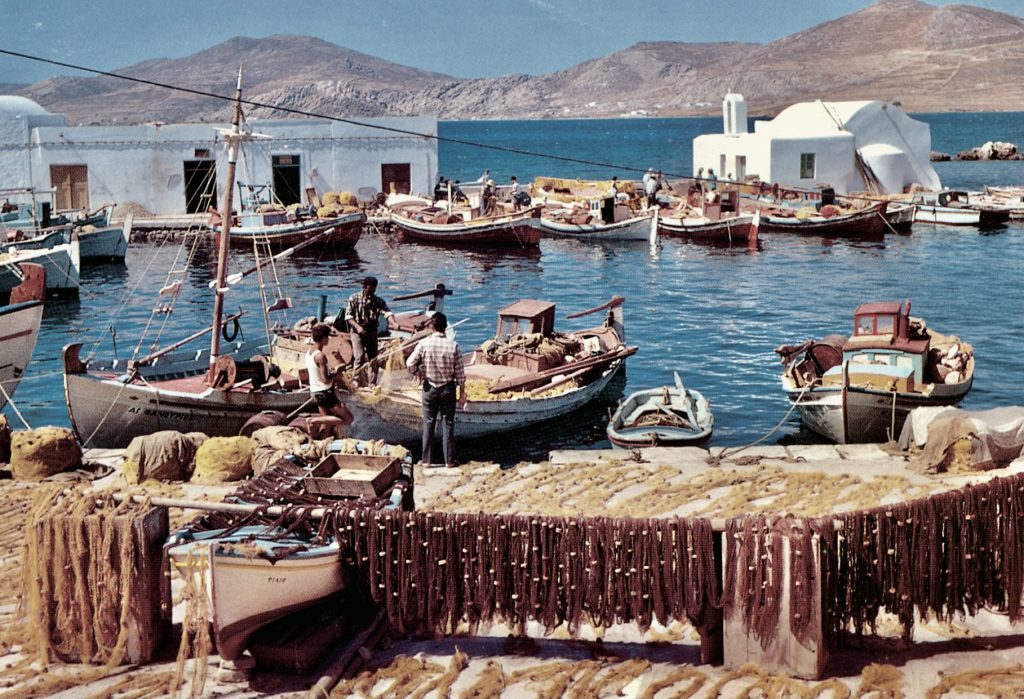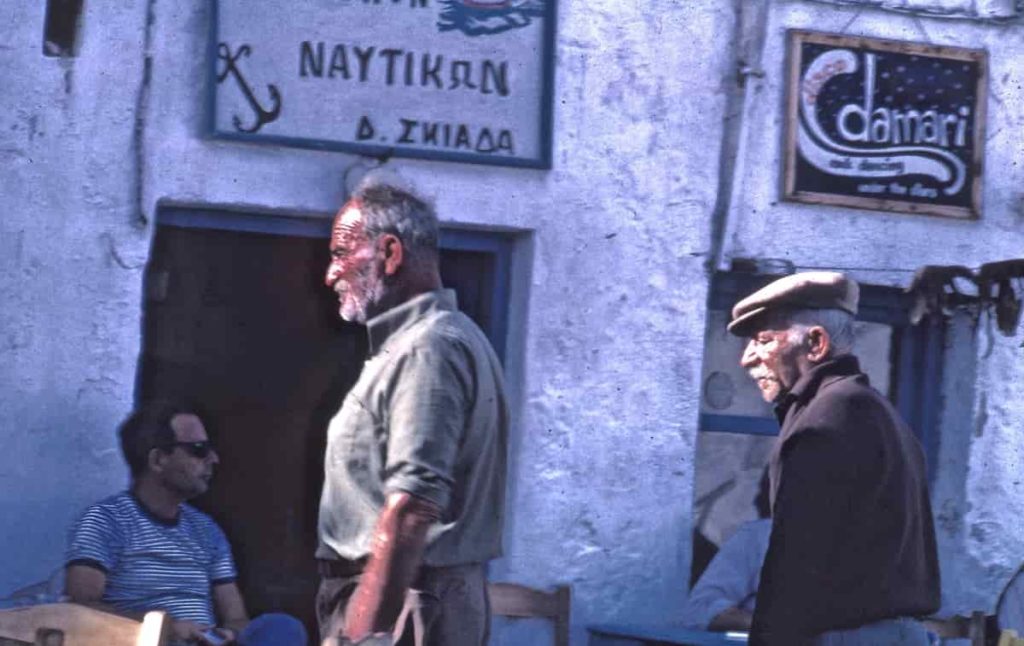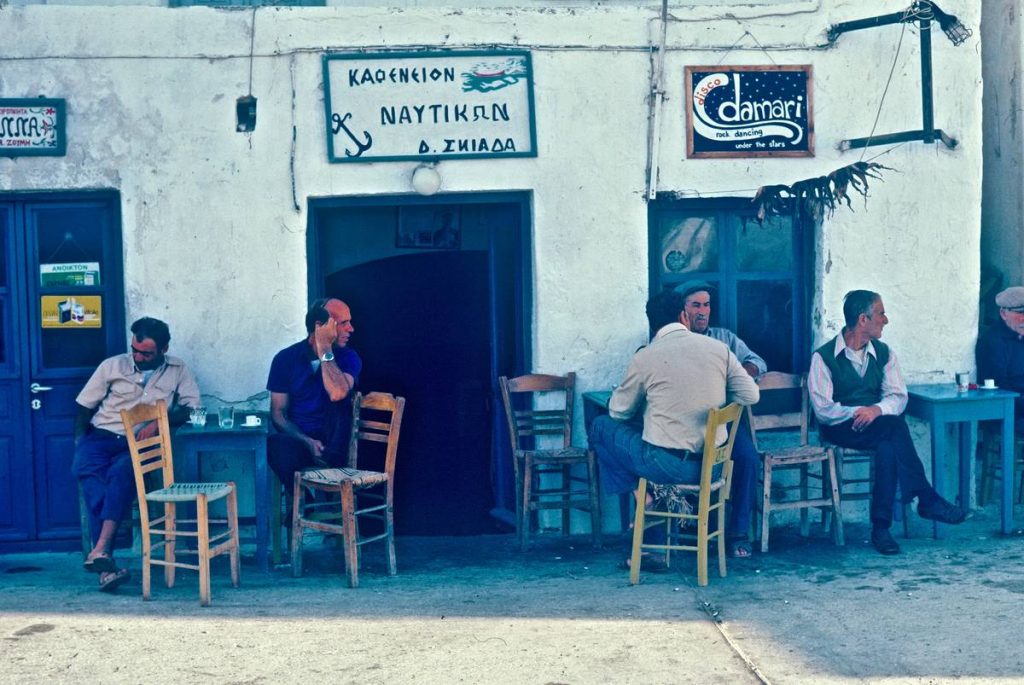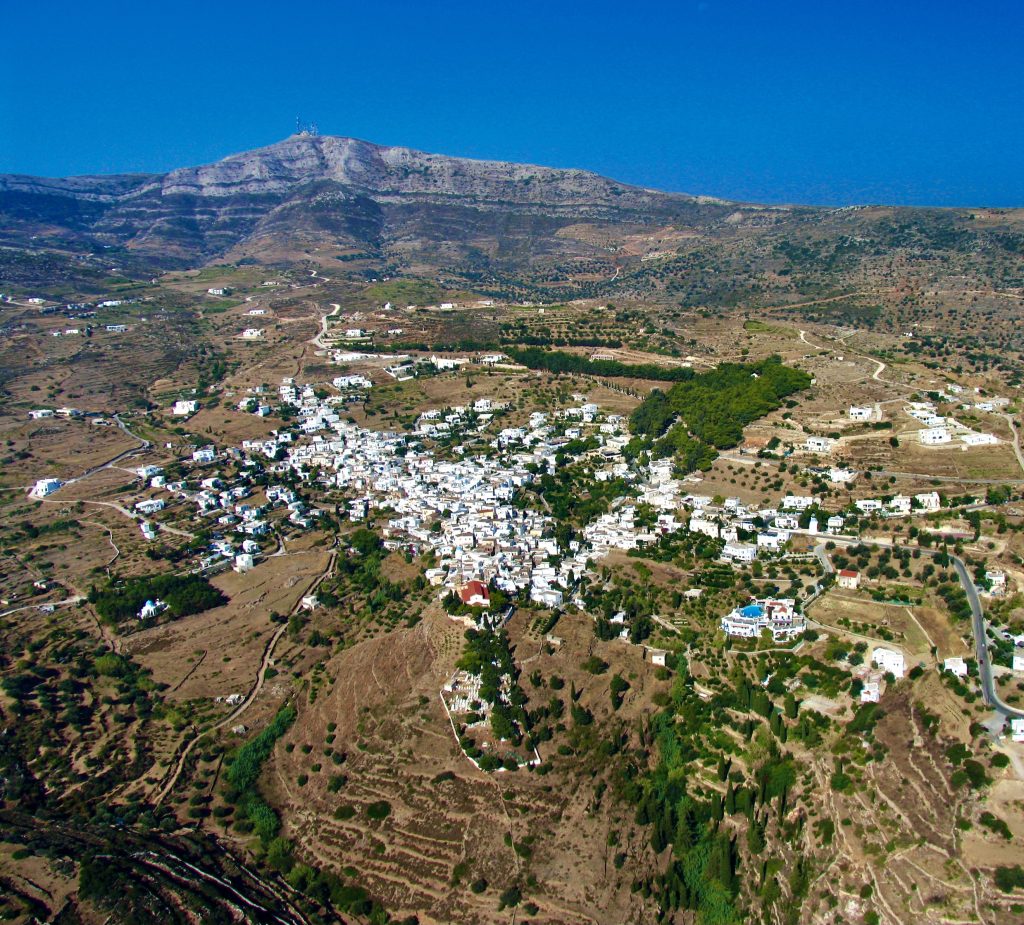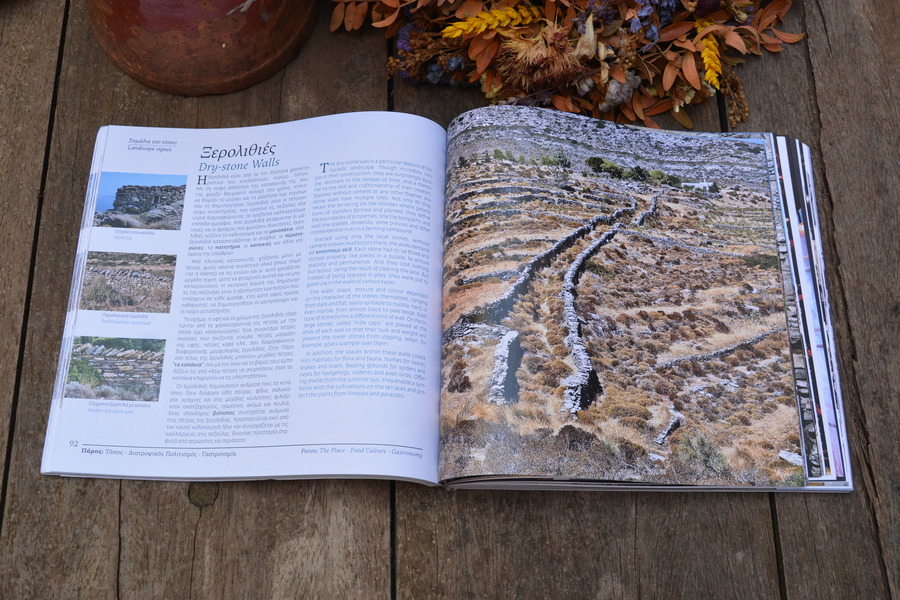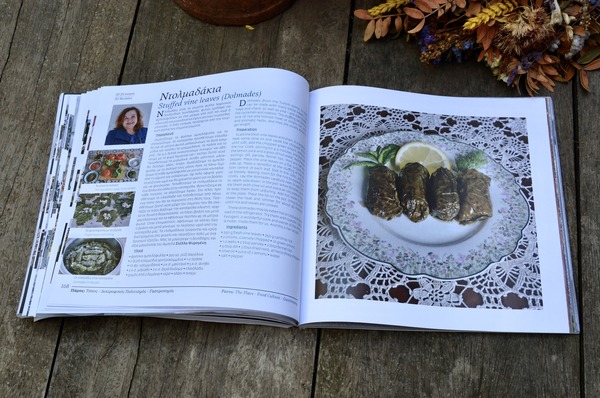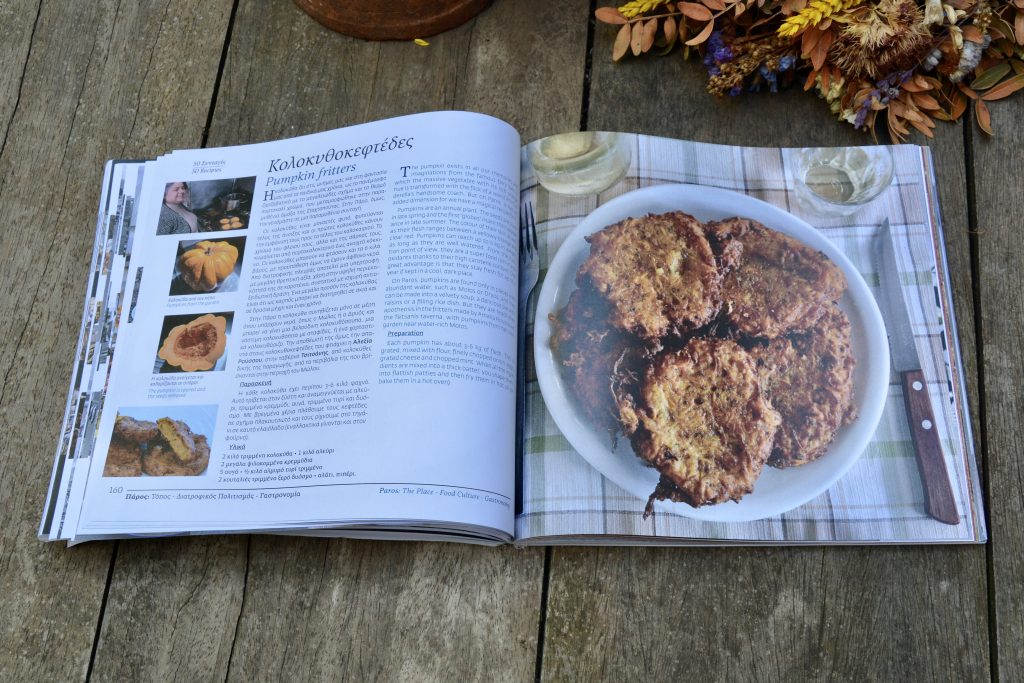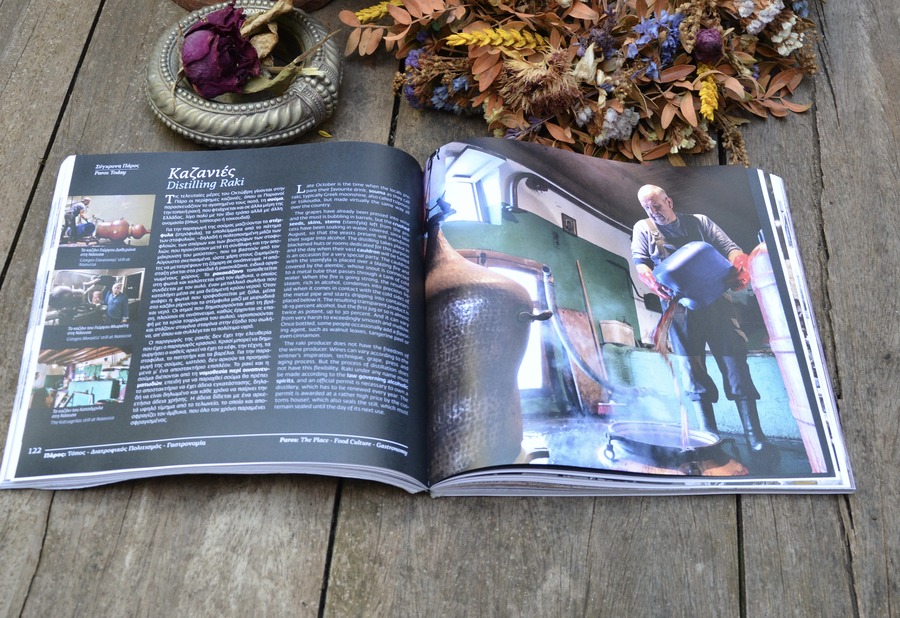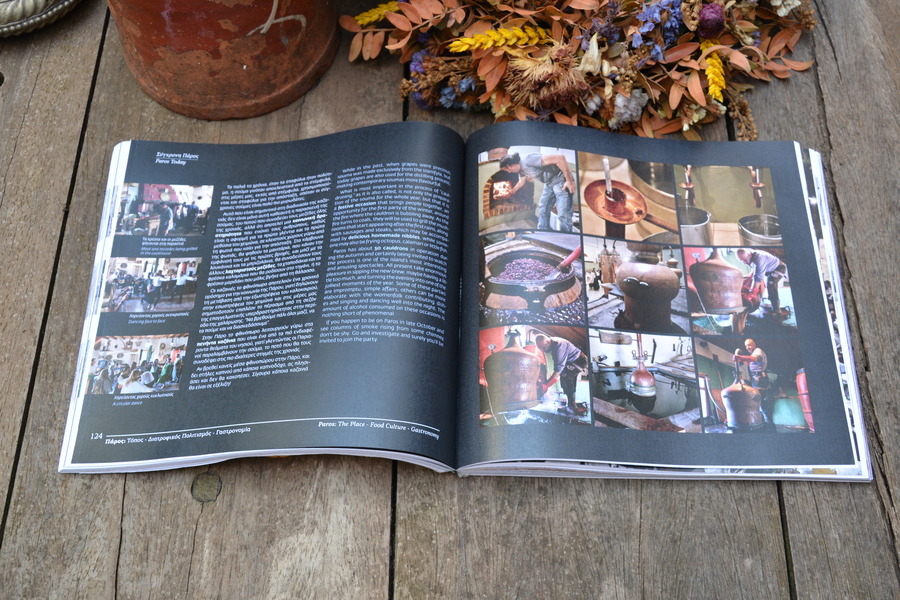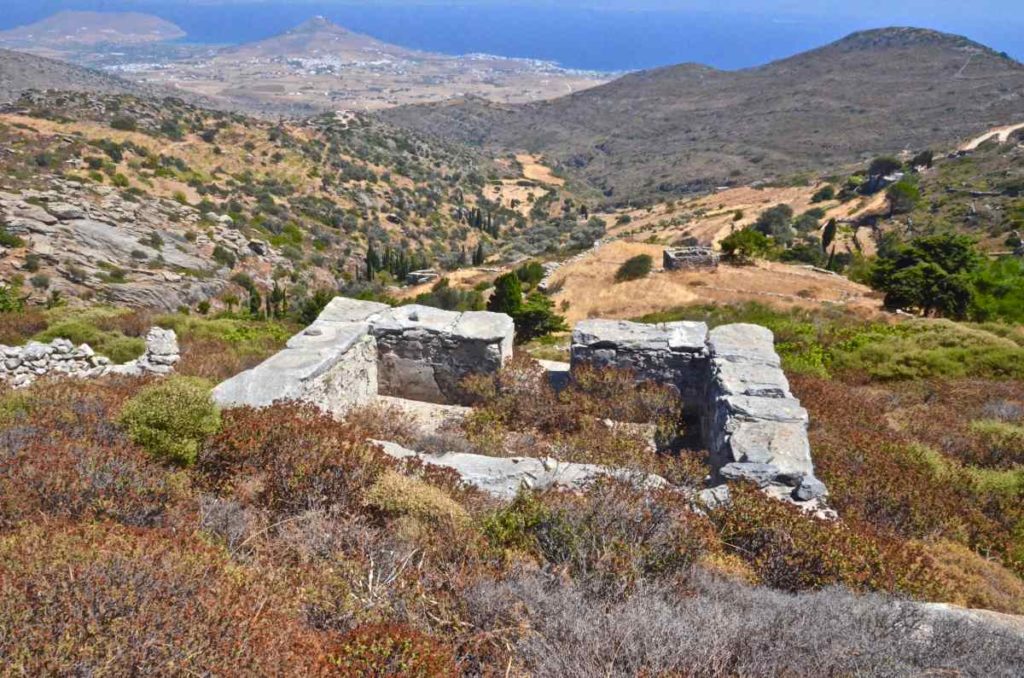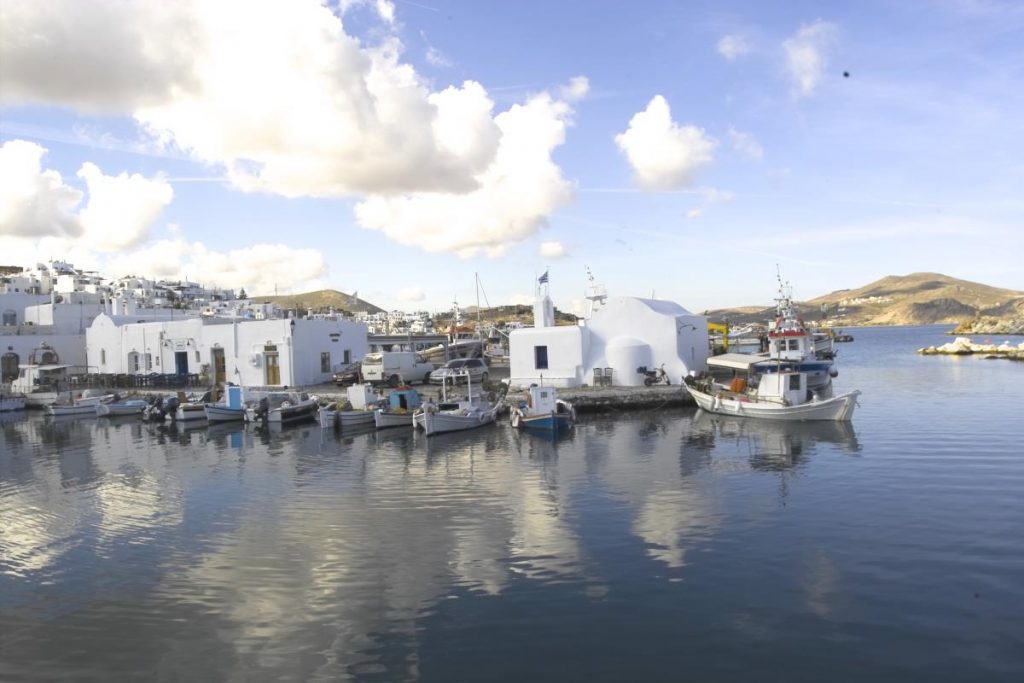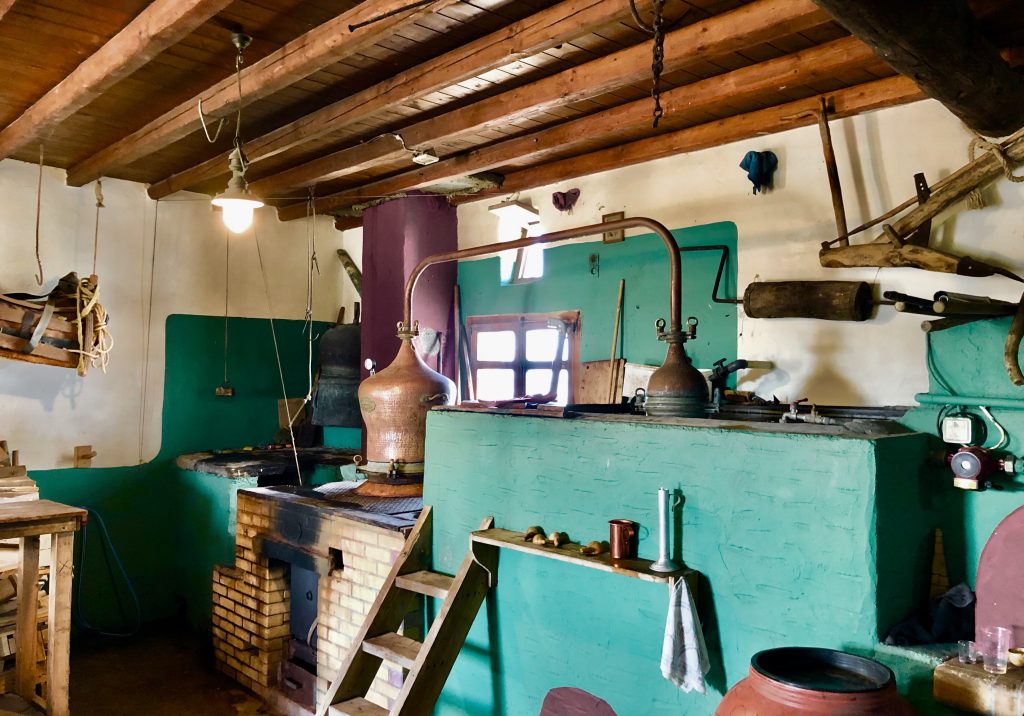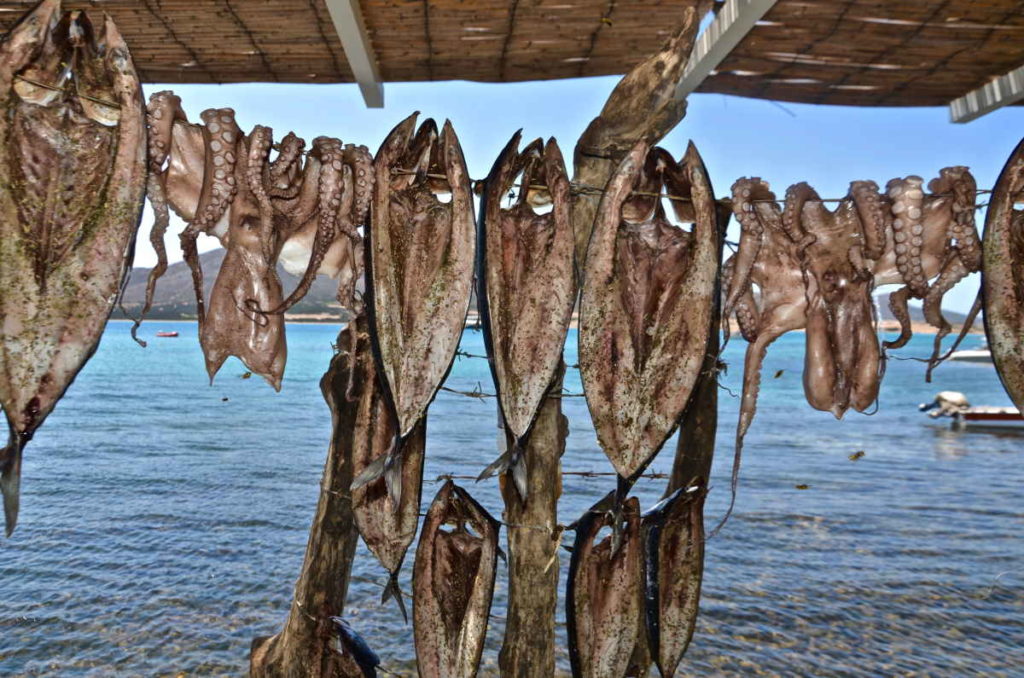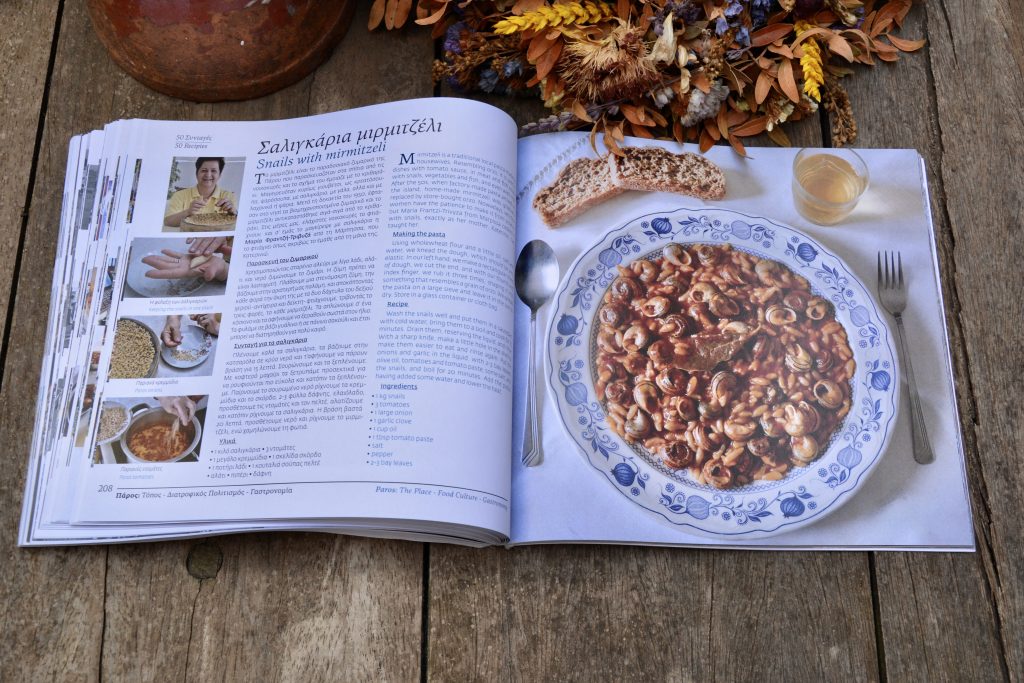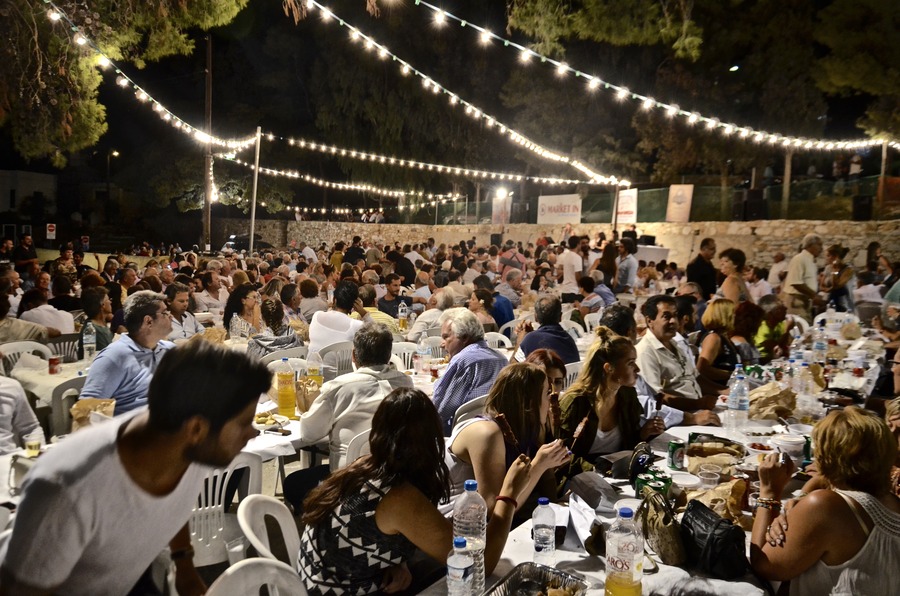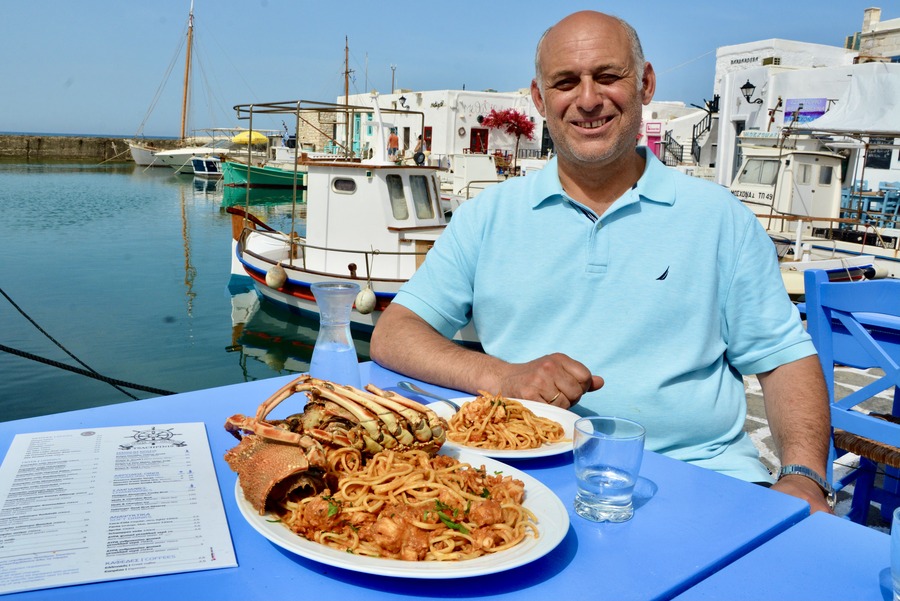What role could a book play for him food culture and traditional cuisine of Paros, in a society of abundance, where on the island one finds all the goods of the world, with restaurants overflowing with dishes of all nationalities and types of cooking? What could be the expediency of getting to know the traditional cuisine of an island, which is looking to find its identity in the growth spurt and cosmopolitan orientations?
Some may see the book as a romantic return to a past that is gone forever, but I argue that for a launch into the future it is necessary to study the past, to draw knowledge from its wisdom and values. So, having collected a material that I tried to fit into 300 pages of descriptions, records, narratives, stories and recipes, I tried to substantiate my point and I hope I succeeded.
Because I believe that gastronomy - apart from the narrow culinary interest - is the surest way to get to know one knows the authenticity and the "demons" of a place, the beauty of its landscapes, the ethos and values of its people, to treasure intense experiences and unforgettable experiences. Because the gastronomy is identified with the culture of everyday life, thus remaining the best way to penetrate the heart of a destination, which is the privileged domain of experience tourism and quality tourism.
I met her for the first time Paros, student, summer of 1974, and since then I haven't stopped visiting her for a single year, completing 50 years on the island. From the first moment I was enchanted by its beauty, the kindness and kindness of its people.
I got to know the island in the age of innocence, when tourism took its first steps, when Captain Linardos, the captain legend of Naoussa, with his bare paw crushed the crisps and the rest of the sea urchins, lest they fall on the feet of the barefoot tourists of the port. When the housewives hosted you and offered you to eat 2 egg eyes and at the same time they opened your eyes to an unknown world.
In 1980 I bought my little house on Poplars, which enchanted me - even though most of the houses were deserted - and there I got married in 1990 with my wife Biliou, in the small monastery of Ai-Yiannis of Kaparos, which had sixty years to celebrate a mystery, and in the neoclassical cafe in the beautiful village square we celebrated our joy with a few friends, playing strings and instruments. At some point in 1994 I created Lefkes Village, a small hotel, a model of alternative tourism – with a settlement of holiday homes – which I operated until 2022. I can say that I experienced Paros both as a visitor and as an observer and as an entrepreneur.
In these fifty years, world-historical changes took place in the world and in the globalized economy of tourism, as well as in Paros itself, which, as the recipient of all the new economic and social developments, saw its physiognomy change. Paros developed into a sought-after tourist destination and its development was rapid.
Ο hypertourism - a phenomenon that affects popular destinations - is a nightmare scenario, which however in Paros can and should be avoided. THE age of innocence for Paros he passed without return, the honor and hospitality must be completed with him professionalism and with a vision of viable and sustainable development. A place will never be able to preserve its assets if there are no citizens who will care and make a constant struggle to preserve them.
My position has always been optimistic about the island, as well as about Greece. Against the dystopian theories about the future of the islands, which depend on tourism – and which are not to some extent unfounded – the strong promotion of cultural identity Island's, η linking tourism with culture and the food sector and the orientation to quality tourism and quality of life, they are sentences that give a convincing vision. I hope my book will put a little gem in that direction.
In any case, the book Paros: Place – Food Culture – Gastronomy constitutes one paying tribute to the island that hosted me for 50 years of my life, became my home and my family, that's why I dedicate it:
"To farmers, breeders, cheesemakers, winemakers and fishermen
that preserve and renew the Parian natural environment,
to housewives who remain custodians of the culinary tradition of Paros,
to all Parians who keep alive the ethos and values of the place,
to the residents and visitors who honor the culture of the island,
and contribute to its sustainable development".
The content of the book is divided into 7 sections:
The first section is the Introduction, as its purpose is to familiarize the reader with the culture of food and then to describe the great interest of modern society in gastronomy, the latter's relationship with tourism and the important role it plays in formation of identity every place. Two other chapters aim to introduce the reader to the basic characteristics of Greek and Cycladic gastronomy.
In the second section titled Natural Resources of the place, Giorgos Pittas refers to the timeless resources of Paros, the place and its history, the people and the settlements they created, its nature, its flora, the main crops (olives, vines, cereals) and the most important products of the agricultural and livestock sector.
The third section titled Signs of the place, presents buildings of traditional architecture that served the phases of transformation of nature's goods into food. Material traces of the traditional culinary culture of Paros, landmarks of the Parian landscape (presses, windmills, mills, paths), scattered across the landscape of the island, an anthem of the elements that make up the physiognomy of the island's landscape and remind us of values of the old times, which are called to give meaning to our modern life.
The fourth section titled Modern life, refers to the present and describes the way Paros utilizes its culinary goods and how it integrates them into the modern economic process, while at the same time it refers to activities where the visitor of the island can come into contact with the local gastronomy, through local events (cauldrons, harvest, wine harvests).
The fifth section titled Kitchen of Paros, includes an immersion in the gastronomy of Paros before the advent of modern lifestyles and tourism. Here the social conditions, in which the traditional cuisine developed, are captured, using material from short stories that eventually go beyond the narrow framework of gastronomy and embrace its entirety "holy everyday life" Island's.
The sixth section, titled 50 traditional recipes, is the central section of the book and includes 50 dishes which were cooked by local cooks, in homes or in folk taverns of the island and are indicative of the philosophy, ethos and aesthetics of Parian gastronomy. The dishes come from epic of the holy everyday, of the housewives of Paros, who throughout their lives, without a single day of interruption, making use of the available food, gave their family the joy of a delicious and nutritious meal. With pride and humility at the same time, η knowledge was passed down from generation to generation without any other ambition for change or innovation.
And of course, we were not satisfied with the way of preparing each food, but in some dishes -along with the recipe- we made reference to alternative cooking of the same dish or even to its variations that are made in other islands. And in addition, whenever we were given the opportunity, we included as many stories and incidents that would add a more "spicy" flavor to our recipe.
The seventh section entitled Poplars 1960-1980, the chronicle of the great change, it contains evidence and testimonies from interviews of people who lived at that time and describe the world-historical changes that took place in Lefkes, a village of Paros, when we went from cooking with wood to the oil gas stove, to the gas bottle and finally to the electrification of cooking appliances.
Finally, the eighth section entitled Useful addresses, it includes a list of about 50 professionals from different fields, which in my opinion contains the most representative things the island has to offer in the field of gastronomy (food, catering).
In short, the book Paros: Place – Food Culture – Gastronomy attempts to:
- To highlight him important culinary wealth of Paros (Places, landscapes, producers of crops, products, dishes, customs, culture), on the one hand for for foreign visitors to get to know him, but mainly so that they don't ignore him - in the confusion of development - the modern Parians who must step on it to shape the form and content of the island's modern tourist development.
- To turn the island's gastronomy towards traditional flavors, highlighting the universal value of simplicity and quality of materials.
- Creates one field of action around which services and narratives should be created that will support the direction of the island towards quality tourism and a quality of life for the residents.
- He's making a first choice of professionals (agricultural sector - processing - focus) that each in its category and its branch could be, through a strategic plan, the protagonists and examples of the new type of development of the island.
- Finally, placing great emphasis on personal stories, recorded during the writing of the book, sends a message that a great capital of the island is the memories of the people who were born at a time when the spoken word was of great importance, either as a historical document, as a personal narrative or as a fairy tale. And as long as the memories are still alive, they must be captured and recorded with every place. Because maybe they're about the last people who can tell us stories, why they were simply the ones who knew how to live them.
A big thank you to the contributors, to the dozens of residents of the island, from all the villages of Paros, who helped me to collect the material I needed, the cooks who prepared the food and contributed a part of themselves, the producers (winemakers, olive producers, honey producers, etc.), and the catering representatives.
As for the book, big thanks to Diana Far Louis who due to her culinary experience rendered the English translation exceptionally well, the Zoe Paxinos in corrections. From Paros Vassili Yatra of Colorbox to whom I entrusted the creative and graphic part and together with her Nicoletta Pappa, and for 6 months we built page by page every day the version that ended -we believe- in an impressive result.
Finally, a prolonged thank you to my wife Bilio Tsoukala, which apart from the difficulties of editing the book, was behind, next to and in front of my every thought and decision, as it happened in my other 10 books.
(The book by George Pittas, Paros: Place – Food Culture – Gastronomy, is bilingual of 288 pages and will be released on 20-7-2023. Official first presentation at Open Theater of the Whites the Wednesday 9-8-2023 and time 8.30)

